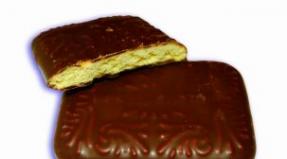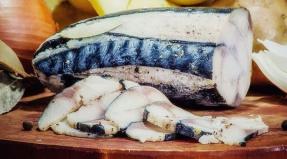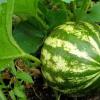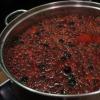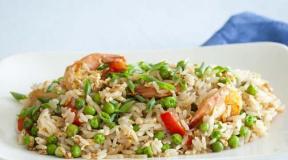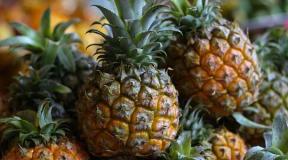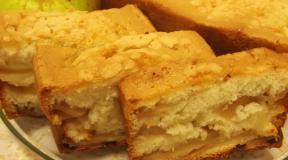What kind of fruit is kumquat, how is it useful and how is it eaten. The benefits and harms of kumquat, how it is eaten, what its taste is like, recipes
The developed trade between different regions of the world leads to the fact that today our daily life includes products that no one really heard about 10 or 20 years ago in these parts. Such products include, for example, kumquat - an exotic ingredient of oriental dishes, which can already be tasted in restaurants of Japanese, Chinese and Vietnamese cuisines.
However, given the growing popularity of kumquat, some large supermarkets began to buy it for sale to ordinary consumers, so now the question is often not even what it is, but how to properly use an exotic fruit to diversify their own diet.
general description
Whatever one may say, for the majority of our compatriots, the kumquat still remains a rare wonder that not everyone has heard of. Even those who have tried this fruit know very little about it, so a little educational program will not hurt.
Let's start with a description of the fruit. Kumquat is a citrus that tastes decently like sweet varieties of tangerines, but the dimensions of such a fruit are much more modest - it never reaches the size of a tangerine, and even has a characteristic shape that resembles a slightly elongated egg. The pulp of the fruit is divided into slices, of which there are no more than 5.


Such a miracle grows on small trees no more than 4 meters high, sometimes also on bushes. As befits a citrus plant, kumquat loves a warm climate and does not grow to the north of the subtropics, although individual experiments on grafting kumquat twigs to a shrub called "ponzirus" growing in regions with a climate similar to ours have been successful.
In general, gardeners note that the relocation of a plant to a cold environment unusual for it has a significant effect on the taste of fruits, which greatly lose in sweetness, but it should be understood that breeding work has just begun.

If we talk about the natural habitat, then initially the kumquat comes from southeastern China - in particular, those regions that border Vietnam. The advantages of culture were appreciated first by the inhabitants of neighboring countries, and then by the Europeans, so you should not think that all these fruits come to us from China - probably many of them came from the much closer Mediterranean. It should be noted that this culture is very popular today as an ornamental indoor plant, therefore, theoretically, it can be found in absolutely any country.

Composition
Fresh kumquat contains about 80% water, so it is not surprising that its calorie content is low - it is about 71 kcal. It should be noted that after most types of culinary processing, a significant part of the moisture is lost, and the concentration of calories increases, therefore, in dried form, for example, the energy value of kumquat can reach much more significant 250 kcal. Hence, fresh, the fruit does not pose a threat to the figure, but in dried form it can harm it.
The characteristic sourness and the very fact of the attitude towards citrus fruits indicate that the fruit is rich in vitamin C - this is its main useful component. However, the list of vitamins present here does not end there - there are also A, E and some B vitamins.
If we talk about trace elements, then the most valuable kumquat is high in potassium. Among other substances, one cannot fail to highlight calcium, magnesium and sodium, and zinc and iron, present in small quantities, complete the picture. The picture of the composition will be incomplete if polyunsaturated fatty acids, monosaccharides and essential oils are excluded from it. Separately, it should be said that kumquat does not contain nitrates, which are oversaturated in modern soils, which is very good for the human body.


Benefit and harm
There is a kumquat worth not only for the sake of a very pleasant taste, but also because of the many properties beneficial to the body. This product is popular in traditional Chinese medicine, therefore, it should at least briefly highlight its main benefits for humans:
- due to the high content of vitamin C, kumquat helps to strengthen the immune system and fight off pathogens of any ailments;
- the same substance is a very effective cure for a hangover, therefore, it is enough to eat a few kumquats to feel better within a matter of minutes;
- the ability of the fetus to actively remove toxins from the body can also be used with toxicosis characteristic of pregnancy, unless an allergy is diagnosed;
- the composition of the fruit allows for an accelerated breakdown of fats, and therefore reduces the load on the gallbladder and liver.

Among other things, kumquat by-products in the form of mainly oil can be used as a single medicine or as a component of various cosmetic recipes.
Unfortunately, there is no food that is guaranteed to be harmless to everyone, and the kumquat, of course, is no exception. There are situations in which it would be wrong to eat it in any form.
- Allergy to citrus fruits also extends to kumquat, therefore, if you can't feast on oranges, you don't even need to try this fruit. At the same time, an allergy is also possible to the kumquat itself, therefore, for the first time, no more than half of the fruit is eaten, carefully monitoring the body's reaction. People who, in principle, are prone to allergic manifestations, are recommended to eat no more than a couple of pieces at a time. Contrary to general guidelines for women, they are also generally advised not to overuse kumquat.
- It should be remembered that vitamin C, which is abundant in kumquat, is ascorbic acid. Like any other acid, this substance irritates the walls of the stomach, and if not everything is in order with the health of the digestive system, you should not aggravate the ulcer or gastritis by using such a delicacy.
- Kumquat belongs to foods that have a pronounced diuretic effect - it's not for nothing that it is so effective in removing toxins. Consequently, the fruit puts an extra burden on the kidneys and urinary system, and if there are problems there, they can only get worse. If there are stones there, the use of the fruit is completely prohibited, otherwise damage to the inner walls of the pathways or their complete blockage may occur.
- Despite the significant content of ascorbic acid, the taste of kumquat is rather sweet, which indicates a significant content of sugars. There are not so many of them, and they are relatively harmless, therefore, in general, the fruit is not contraindicated for diabetics. Another thing is that people with such a diagnosis should use kumquat carefully, in moderation and under constant control of blood sugar levels.

Usage rules
The fact that too much kumquat (like any other product) is not worth eating, we have already talked about, as well as that you should start with small portions - it remains to decide how to eat this fruit correctly.
For a start, the citrus that cannot be eaten fresh is bad - this statement fully applies to kumquat. Moreover, such a fruit has a characteristic feature - it is never peeled, but eaten directly with the skin, since the latter, being very thin, is not inferior to the pulp either in taste or in benefits. The fruits are simply washed whole and eaten like that, although for convenience they can be cut into halves.

The rule of eating kumquat with peel applies not only to a kind of dessert represented only by this fruit, but also to dishes that can be prepared from a fresh variety. So, a very tasty juice from kumquat is also squeezed out without peeling the pulp from the skin - the resulting liquid can be drunk both in pure form and as part of cocktails, or it can be added to ice cream. In the same form, the fruit is present in any dishes, regardless of the method of their preparation.

For all the usefulness of fresh kumquat, you should not overeat - an adult, even in the absence of allergies, should not exceed the daily allowance of 300 grams, and for children this rate is reduced by three times.
Unlike most citrus fruits we are used to, kumquat is not only eaten with the skin, but also used to prepare dried fruits. For our region, such a product is still a rarity, but if you suddenly come across it, be aware that it is also used both raw and as part of dishes, and also with a peel.

Dried kumquat can be consumed in many different ways, but quite often it is directly related to drinks. In Europe, such a product is considered a chic addition to many cocktails, often they are complemented by martinis to add an exotic flavor and aroma to the drink.
But at home, this fruit is used for drinks that do less harm to the body - for example, grinding dried kumquat and adding such powder to tea leaves is considered a typical phenomenon, as a result of which a natural flavored tea with additional beneficial properties is obtained. You don't have to add the fruit directly to the drink, using it as a dessert served with tea - in this case, the fruit is usually dipped in honey or molasses.

Unfortunately, dried kumquat, like any other dried fruit, per 100 grams of weight, contains much more sugars and other substances in contrast to the lack of water, so the same such a product is contraindicated for diabetics- he is able to provoke a very sharp jump in blood sugar. Even if a person is not threatened with diabetes, one should still refrain from excessive enthusiasm for such a dessert, since the calorie content as a result of drying has increased several times, and with such delicacies it is no wonder to gain excess weight in the shortest possible time.

If we talk about the possible culinary use in our country, then the most popular recipe, perhaps, will be an ordinary compote. Such a drink is characterized by a bright citrus taste, and for more piquancy, a little cinnamon is often added to it.

For our fellow citizens, canning any fruit is also a very common habit, therefore, even for kumquat, recipes have already been invented. This fruit can be used to make a delicious jam with a rich flavor and aroma, which can be eaten without anything or added as a filling to baked goods. An alternative way to prepare kumquat is to marinate whole fruits with cloves, cinnamon and cardamom - a spicy appetizer will turn out to be great and will surprise guests much more than traditional tomatoes in this role.

No matter how you use kumquat fruits, remember that your dish is exotic, and its taste, especially at first, will not necessarily please the guests and the chef himself. At the same time, the use of such ingredients implies a mandatory warning of all those present in order to avoid unforeseen allergies.
For information on how to cook kumquat jam, see the next video.
May-19-2012
Kumquat:
How is kumquat eaten? Yes, you should also know this - after all, the benefits that this wonderful fruit will bring you depends on it. But before we talk about how to eat a kumquat correctly, let's remember what it is - a kumquat.
It grows in Southeast Asia, also on the islands of Japan, in China, in the Middle East, and, in some places, in America. This citrus comes from China. Many people know him by the names of fortunella or kinkan. Today, kumquat is widely cultivated and is readily used in cooking by the cuisines of various countries and peoples.
Kumquat is not only one of the healthiest and most delicious fruits. It is also an amazingly beautiful tree with golden fruits and a wonderful aroma. It is also grown as an ornamental houseplant. Twigs with small fruits of kumquat are used in floristry as decorations for bouquets.
Also, the kumquat in Japan is one of the symbols of the Happy New Year.
A fruit like kumquat is a rich source of nutrients (in particular vitamins and essential oils). It contains vitamins C and P, pectin substances. Kumquat is nitrate free. It has a beneficial effect on the functioning of the digestive system.
Helps relieve tension, drive away apathy and depressed mood. It should be noted that it contains antifungal substances.
From hoary antiquity to the present day, the kumquat is willingly used by the traditional medicine of the eastern peoples. For example, in China they are treated with fungal infections (kumquat pulp contains furacumarin, a substance with antifungal effect). In some Asian countries, the peel of this fruit is placed near a fire, as it is believed that the aroma it exudes will heal colds and coughs. To combat coughs and colds, kumquat is used in certain regions of China.
Besides:
The antibacterial properties of the plant help in the prevention and treatment of colds, bacterial and viral diseases.
Tincture made from kumquat has long been successfully used in Chinese medicine to treat coughs. This tincture gives an even greater effect in combination with honey.
The essential oil extracted from the fruit is used to heal the respiratory tract.
In Chinese medicine, the antifungal properties of the plant, which furocoumarin provides, have long been used. It also helps to cope with purulent infections.
The juice squeezed out of the fruit perfectly whitens age spots and freckles. It is often added to creams. But even more often they use raw juice, the effect of it is visible as a result of the very first procedure.
But since this fruit is appreciated primarily for its taste and useful qualities, let's turn to our question - how is it eaten?
The skin of the kumquat is thin and sweet in taste, so the fruit is consumed whole, cutting it into thin slices. When you buy a kumquat, you should know that Hong Kong fruits have the most edible pulp, while others sometimes have it so sour that only the skin can be eaten. I want to note that Asian chefs are aware of how to successfully use even such fruits.
I would also like to say a few words about how it is prepared. Sweet fruits are eaten raw, and from sour ones they make jam, marmalade or candied fruits. Kumquat is used for the manufacture of canned food, added to salads, used in the preparation of various dishes from poultry and meat. Special mention should be made of a dish like black cod when lined with golden kumquat fruits around the edges.
In Europe, kumquat is now becoming increasingly popular as a martini snack - it can successfully replace olives, serve as an ingredient for a salad.
Delicious candied fruits are prepared from kinkan fruits. This product is obtained as a result of long-term cooking of sweet and sour fruit slices in syrup from sugar molasses. Candied kumquat fruits are widely used in aromatic pastries: muffins and biscuits, in butter cakes and yeast dough.
Candied fruits of this plant are very high in calories, unlike fresh fruits: 100 grams of kinkan sweets contain up to 284 kcal!
It is very difficult to find fresh kumquats in our country: basically, this fruit is sold in a dried or "candied" version. By the way, similar to untreated fruit, candied fruits of this plant quickly cope with a hangover and are effective in vitamin deficiency.
You can also see dried fruits on sale. This interesting product is obtained with the help of a dehydrator, or as a result of natural drying of citrus in the sun. Dried kumquat preserves all the useful minerals and vitamins, especially pectin, and therefore is not cheap.
True, the dried kumquat does not look very presentable: it is dark and wrinkled, but incredibly tasty. It is usually supplied by large health food companies and sold as a snack.
How is kumquat useful in weight loss diets?
Kumquat normalizes digestion processes, speeds up metabolism, and this is very important for losing weight. In addition, the fruit contains few calories: 71 kcal per 100 g. Therefore, the fruit is perfect for various diets.
Scientists from the University of London conducted an experiment and found that the daily consumption of sweet and sour fruits helps to get rid of an average of 5 kg per month. The fact is that kumquat contains a special compound that burns those extra pounds.
It also contains vitamins that have a positive effect on metabolism - this is the secret of losing weight. It turns out that in order to lose weight, it is enough to eat a few kumquat fruits every day. And this, in fact, is not a diet.
Since kumquat is low in calories, improves metabolism, removes excess fluids and is well nourishing, the fruit is the best fit for consumption during a diet. How to lose weight with this fruit? Everything is very simple. It should be added to various fish, meat dishes and salads, cook sauces from the pulp, drink juice from the fruit and use it as snacks. During a diet with this fruit, you can eat a variety of foods, except for fatty ones. And also you can not eat pastries and sweets.
That is, dairy and fermented milk products should be low in fat content, it is better to choose veal, chicken and beef from meat, there is only rye and whole grain bread. Losing weight on such a diet is very comfortable, it is easy to transfer.
The diet menu on kumquat can be anything, the main thing is to consume more of this delicious fruit in the diet. Moreover, there are many recipes with kumquat. These are desserts, soups, salads and other interesting and tasty dishes. Losing weight on such a diet will take several weeks, since the weight will not go away very quickly. Although it all depends on the initial weight.
Do you remember the word "citrus"? Orange, tangerine, lemon, grapefruit, lime ... Not many will be able to continue the list. Did you know that the Citrus family has 28 plant genera? This is pomelo, bergamot, clementin and even such a common fruit in Thailand as kumquat... Let's not study the entire family tree of such an honorable family, but take a closer look at the kumquat.
The homeland of this plant is Southeast Asia. The first mentions of kumquat in literature date back to the 12th century (China). In ancient documentary sources of the Celestial Empire, descriptions of secular receptions are often found, during which rich tables were decorated with flowerpots with fruiting kumquats. The guests were treated to fruits and praised the master's gardening skills with might and main ...
The kumquat came to Europe thanks to the botanist from England Robert Fortune. In 1846 he brought a miniature fruit to the London Horticultural Exhibition. After a short research, the kumquat was classified as a citrus, but after a more detailed study in 1915, the fruit became an independent subgenus.
Botanical description of kumquat
Kumquat is the name given to the fruits of some citrus fruits that make up the genus Fortunella... It is a small tropical fruit of yellow-orange or orange color, similar in appearance to a small orange. Translated from the Chinese language (from "gam gvat"), kumquat means " golden orange».
The average size of a kumquat fruit ranges from 2 to 4 centimeters wide and 3 to 5 centimeters long. Taste exotic fruit resembles a tangerine with sourness. He completely edible including sweet rind.
In the wild, you can find several types of "golden orange", differing in shape and taste of the fruit. Cultivated varieties of kumquat are rarely grown from seed - the plant has a weak root system that requires careful maintenance. In Thailand, the plant is propagated by grafting it onto a three-leafed poncirus (Poncirus trifoliata). In Thai homes, kumquats are common, grown as indoor plant.
Types of kumquat known today:
- Malay kumquat;
- Hong Kong kumquat;
- kumquat marumi;
- kumquat nagami;
- kumquat maiva;
- Nordmann nagami (a type of kumquat nagami);
- kumquat fukushi;
- variegated kumquat (a type of nagami kumquat).
In addition to these main species, about ten kumquat hybrids are successfully cultivated in Thailand.
Kumquat: beneficial properties
 Kumquat- a real mini-warehouse of vitamins and nutrients. It contains essential oils, fatty acids, iron, calcium, copper, potassium, sodium, magnesium, zinc, phosphorus, vitamins A, B1-6, C. The high concentration of the last vitamin puts kumquat on a par with strong immuno-strengthening and bactericidal drugs ... Pectin, fiber and natural enzymes contained in the fruit help to normalize the digestive system and help Thai doctors fight ulcers and gastritis.
Kumquat- a real mini-warehouse of vitamins and nutrients. It contains essential oils, fatty acids, iron, calcium, copper, potassium, sodium, magnesium, zinc, phosphorus, vitamins A, B1-6, C. The high concentration of the last vitamin puts kumquat on a par with strong immuno-strengthening and bactericidal drugs ... Pectin, fiber and natural enzymes contained in the fruit help to normalize the digestive system and help Thai doctors fight ulcers and gastritis.
In the course of many years of research, it was noticed that regular consumption of kumquat in food protects against depression, chronic stress, nervousness and irritability. The fruit tones up the nervous system, increases the level of emotional sensitivity, drives away apathy, charges with positive energy. The systematic use of kumquat cleans blood vessels from fatty plaques, which is an excellent prevention of atherosclerosis, heart attack and stroke.
The skin of the kumquat contains furacumarin, a substance that gives the fruit anti-inflammatory and antifungal properties. Thais use dried peel to treat flu, cough, runny nose and other colds.
Kumquat is a dietary product that promotes the breakdown and elimination of "bad" cholesterol from the body, cleansing cells of radionuclides, toxins and heavy metals.
Harmful properties of kumquat
Kumquat does not contain toxic substances that can cause health problems. The main contraindication to the use of an exotic fruit is the individual intolerance of its constituent substances. It is not recommended to eat kumquat during pregnancy or lactation, as well as for people suffering from kidney disease or high acidity of the stomach.
Kumquat in cooking
The kumquat fruit is widely used in cooking. The fruit eaten raw, they decorate sandwiches, salads, buffet snacks, mulled wine and cocktails. Heat-treated, kumquat is used as an ingredient in sauces, candied fruits, casseroles, marmalades and jams.
How to choose a kumquat
When buying a kumquat, you need to carefully examine the condition of its peel. In a fresh ripe fruit, it is shiny and smooth, without traces of blows, without cracks or dents, has a rich orange color. A ripe kumquat should be firm to the touch.
Features of storing kumquat
Kumquat keeps well. If the fruit is thoroughly washed and dried before laying, it will retain its taste in the refrigerator for up to three weeks. If you put it in a freezer, then at a temperature of -18 ° C, the beneficial substances of kumquat will remain for six months.
By the way…
- Thai elders call the kumquat " fruit of wisdom". Even in ancient times, people noticed that a small "orange" well stimulates the activity of the brain and gives wisdom;
- kumquat - excellent anti-hangover means.
Among the many familiar citrus fruits, there is a little-known exotic fruit - Kumquat... Despite the fact that he is also from the citrus family, few people know him in our area. Nevertheless, it has medicinal properties and a high content of vitamins and minerals, while it has a low calorie content.
[whine]
Kumquat, what is this fruit?
Kumquat grows on an evergreen shrub tree and is small in size, about the size of a walnut. The fruits are very similar in taste to unripe tangerines or oranges with a sweet peel, so they are eaten whole, without peeling, as they contain the most useful vitamins.
The sour-sweet taste of kumquat with a slight bitterness made it possible to use it in cooking for cooking meat, fish, sauces, jams, juices and as a decoration for any dishes.
It is used for the manufacture of dried fruits and candied fruits... Possessing medicinal properties, kumquat perfectly relieves hangover syndrome, which is why in China, after a fun feast, they are treated with it.
Kumquat is widely used in folk medicine for the treatment and prevention of various diseases associated with a deficiency of vitamins, especially vitamin C. Candied fruits retain a valuable vitamin, the benefits of which are easily assimilated by the body.
The benefits and harms of kumquat
The fruits of the kumquat plant are useful in the treatment of many diseases, as they can replenish the supply of substances necessary for the health of men and women. Depending on the type of fruit, it can be green, yellow or orange. When cooking candied fruits, the color of the kumquat is preserved in dried form.
Healing kumquat, the benefits of daily use:
- with reduced immunity, it increases the body's resistance to colds;
- possesses powerful anti-inflammatory and bactericidal properties;
- has a powerful effect in the treatment of fungi, including cancer;
- has a beneficial effect on the nervous system;
- with diabetes, gently lowers sugar;
- when treating high blood pressure, it lowers its level without harming the body;
- normalizes metabolism, improving the secretion of gastric juice;
- enriches the brain with valuable elements, therefore it is recommended for heavy mental work;
- helps to lose weight.
Definite kumquat harm it appears only as an allergenic product, therefore, people suffering from allergic reactions need to reduce the intake to a minimum. Also, the fruit can be harmful in case of serious inflammatory diseases of the gastrointestinal tract, irritating its mucous membrane.
Kumquat - uses and useful recipes
Kumquat contains useful elements such as:
- vitamins A, B, C, E, P, K;
- calcium, zinc, iron, phosphorus and other elements;
- pectin;
- antifungal agent furacumarin;
- flavonoids;
- folic, malic and citric acid;
- food fibers valuable for the body
Due to its excellent taste and a high content of valuable substances for the human body, the fruit is actively used in the preparation of medicinal recipes.
Kumquat juice - beneficial properties
Of particular value is kumquat peel and juice... The juice of this fruit is very active, therefore it is not recommended for people with high acidity, as it is harmful to the mucous membrane.
Healing kumquat, the benefits of juice:
- excellently lowers cholesterol with high blood pressure;
- suitable for the normalization of digestive activity;
- restores the nervous system, gently relieving stress, neuroses and depression;
- removes heavy toxins from the body.
Consume no more than 100 grams in two doses per day.
With regular use of this juice, there is no need to take immunomodulating drugs. With the additional intake of candied fruits, the medicinal benefits of this product increase several times. How to take kumquat during pregnancy - recipes
Diabetes application
Kumquat, or Japanese fortunella widely used to treat diabetes due to the low calorie content (70 kcal). Therefore, in diabetes mellitus, both fresh fruits and dried, dried and candied fruits are used. It should be remembered that it is fresh kumquat that contains less sugar in its composition than other types.
Dried fruits derived from kumquat, have a powerful antioxidant effect to maintain the entire heart system in a normal state, therefore they are recommended for use for people who suffer from high sugar.
Benefits of kumquat from pressure - recipes
Due to its properties, the product is successfully used in the treatment of hypertension, including chronic.
Healing tincture of juicy kumquat with the addition of honey, it quickly lowers cholesterol, lowering blood pressure, especially the upper value. Of particular benefit is the use of candied fruits made from kumquat.
For the treatment of pressure, a prescription is used:
- take in equal parts the fruits of hawthorn, viburnum, elderberry and kumquat, grind with sugar and take 1 tablespoon 3 times a day.
Kumquat benefits for the heart:
- strengthens the heart muscle;
- restores heart rate;
- cleans blood vessels from excessive slagging;
- increases the elasticity of the inner walls of blood vessels.
Daily use of this fruit in the amount of 4-5 pieces reduces steady pressure after 7-10 days and keeps it at this level for several months. You need to be treated in courses.
What are the benefits of kumquat seed oil?
The seeds of an exotic green plant contain essential oils, therefore they are used for viral, bacterial and fungal diseases.
Seed oil accelerates metabolic processes in the body and leads to an improvement in the skin, relieving rashes.
Complex external application of the oil gives good results in the fight against aging, restoring skin elasticity... It is ideal for women who want to preserve their youth without resorting to aggressive means.
With its powerful antifungal properties, the oil is applied with external treatment of fungus and psoriasis.
How to use kumquat for colds?
A miniature, but extremely healing fruit, it is used in the treatment of colds. It can be consumed for coughing both in its natural raw form, as a tincture, tea, or using an oil for inhalation.
For prevention and for cough treatment, including bronchitis, the following recipe is used:
- squeeze out the juice from 5 fruits, add 3 teaspoons of liquid honey and lemon juice, mix the mixture and take half a teaspoon every hour until the condition is relieved.
It also perfectly relieves a spasm in the throat and treats sore throat dried fruit or candied fruit, which has tannins. In addition, the use of dried or dried fruit does not irritate the inflamed lining of the larynx.
How to make a tincture - recipe
It is important to note that no tinctures and decoctions are made from a miniature fruit that looks like an orange, since heat treatment kills most of the nutrients, so you can only cook alcohol tincture by the following method:
- take 10 shrub berries, add 500 g of liquid honey (better than May) and 500 g of vodka, then insist in the refrigerator for at least 2 months and take 1 tablespoon three times a day.
The prepared tincture can be applied with high blood pressure, problems with digestion and heart activity, as well as for many other ailments. The use of the prepared medicine lies in the systematic intake.
Dried and dried kumquat - beneficial properties
Dried kumquat it is distinguished by a high content of not only vitamins, but also sugar, so take it with caution in people with diabetes. Including a few sun-dried berries of the Japanese bush in the diet, you can significantly increase immunity.
For the treatment of many diseases, dried kumquat is used, the beneficial properties of which are due to the high content of antioxidants that fight the aging process.
This recipe helps to establish the work of important systems in the body and increase mental activity due to the combined healing properties.
The benefits of dried fruit or candied fruit consists in the minimum sugar content, compared to dried, therefore it is recommended to use it for diabetes, as well as include in the diet of losing weight women and men.
It is used to normalize digestive activity, strengthen immunity, increase the body's resistance and, oddly enough, to improve vision.
In Japan women use dried kumquat to keep skin youthful, for this, they are poured with warm water, and in different proportions, and insisted for about an hour, then they are washed with this healing liquid. Thanks to the antioxidant properties of the prepared water, the complexion improves and wrinkles are smoothed.
How to cook kumquat in syrup?
Healing and healing jam, obtained from small fruits, is used in the treatment and prevention of many diseases.
It is prepared as follows:
- take 1 kg of fresh prepared berries, 1 kg of sugar and 2 glasses of water, if desired, you can add slices of ginger.
First, you need to make a syrup from water and sugar, then pour it over the kumquat and leave it for a day so that the berries are well saturated with it.
For a good soak, it is recommended to pierce each berry, for example with a toothpick. Then put on fire and bring to a boil, reduce heat and let it simmer a little, while the berries will acquire a bright orange color. This indicates that the healing product is ready.
Candied Kumquat - Cooking Method
To prepare candied kumquat you need:
- Take 50 washed berries, 500 grams of sugar and 100 grams of water.
- First, prepare syrup from sugar and water (cook until thick).
- Then put the kumquat berries in the syrup and boil for another 40-50 minutes.
- Then put on a sieve, cool slightly and roll in powdered sugar.
- For longer storage, dry in the oven at a low temperature.
- Candied fruits are stored in paper containers for up to 4-5 days.
Regardless of the way of using such valuable berries, the benefits of which are invaluable for the whole body, they carry a healing storehouse of important minerals in a high percentage and are considered the best dietary product in the treatment of many diseases.
Kumquat is a citrus fruit that resembles an orange. Kumquats are slightly larger in size than grapes. This fruit has a peculiarity - its peel is sweet, and the pulp is tart and sour.
The kumquat has edible rind, flesh and even bones, although they have a bitter taste.
Kumquat is used in cooking. It is used to make sauces, jams, jellies, marmalade, candied fruits, juices and marinades. Kumquat is added to pies, cakes, ice cream and salads, used as a side dish and seasoning for meat and seafood dishes. The fruits are canned, pickled, baked and eaten raw.
Composition and calorie content of kumquat
The composition of kumquat is full of useful and nutritious substances. It contains many essential oils, including limonene, pinene and monoterpene.
Kumquat contains fiber, omega-3s, flavonoids, phytosterols, etc.
Composition 100 gr. kumquat as a percentage of the daily value is presented below.
Vitamins:
- C - 73%;
- A - 6%;
- AT 12%;
- B2 - 2%;
- B3 - 2%.
Minerals:
The calorie content of kumquat is 71 kcal per 100 g.
Kumquat is used as a medicine because it prevents heart disease, normalizes bowel function and strengthens the immune system.
For bones
Bones become more fragile and weaker with age. Kumquat will help to avoid thinning of bone tissue. Calcium and magnesium in its composition strengthen bones, make them strong and healthy, and also prevent the development of osteoporosis and arthritis.
For the heart and blood vessels
High cholesterol levels in the body lead to hypertension. Cholesterol obstructs blood flow by forming plaque in the arteries and clotting blood in the veins, which can lead to strokes and cardiac arrest. Kumquat contains phytosterols, which have a structure similar to cholesterol. They block its absorption by the body and lower blood cholesterol levels.
The fiber in kumquat optimizes the body's glucose and insulin balance, addressing the causes of diabetes.
Stable production of red blood cells by the body is essential to prevent anemia. This is facilitated by the iron contained in kumquat.
For eyes
Kumquats are rich in vitamin A and beta-carotene, which affect the quality of vision. Beta-carotene acts as an antioxidant and reduces oxidation in the eye cells, preventing macular degeneration and cataract development.
For bronchi
Consuming kumquat, which is rich in vitamin C, can help relieve colds, flu, and respiratory problems associated with coughs and sore throats.
For teeth and gums
To maintain a healthy oral cavity, brushing your teeth 2 times a day is not enough. You should regularly consume foods rich in vitamins and calcium. Such a product is kumquat. It strengthens teeth and protects gum health.
For the digestive tract
The fiber in kumquat normalizes the functioning of the gastrointestinal tract. With the help of the fruit, you can cope with constipation, diarrhea, gas, bloating and cramps in the stomach.
For the kidneys and bladder
Kumquat contains a lot of citric acid. It supports kidney health, normalizes kidney function and prevents kidney stones. These properties make kumquat beneficial for the urinary system.
For skin
Exposure to the sun on the skin leads to the formation of wrinkles, age spots, roughness and the development of skin diseases. The antioxidants in kumquat protect the skin from harmful effects and prevent early aging.
Vitamin C, calcium and potassium in kumquat strengthen hair. Eating the fruit will keep your hair strong and healthy and will also reduce hair loss.
Read also ...
- Recipes for making coffee with ice cream at home
- Strawberry panna cotta - a classic of world culinary What is panna cotta with strawberries
- Cream of curd cheese for cake - the best recipes for impregnating and decorating dessert
- Profiterole recipe and three original custard recipes Protein cream for profiteroles

